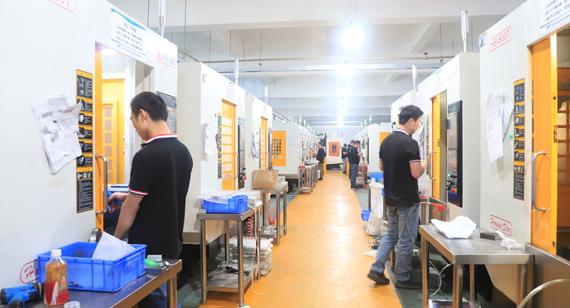15 years one-stop China custom CNC machining parts factory
The VMT blog is dedicated to sharing our hard-earned knowledge in prototype manufacturing. We hope these articles will help you optimize your product designs and gain deeper insight into the world of rapid prototyping. Enjoy the read!
Get an Instant Quote VMT
VMT  2024 04 04
2024 04 04 In modern manufacturing, CNC machining factories play a crucial role in the production of precision parts, with their operational efficiency and product quality directly impacting a company's competitiveness. Among these factors, the thorough understanding and grasp of customer needs by CNC machining factories are essential prerequisites for achieving high-quality and efficient production.
 66
66
 Read more
Read more
 VMT
VMT  2024 04 03
2024 04 03 As modern manufacturing industries continue to evolve, the application of precision CNC machining parts in sectors such as aerospace, automotive manufacturing, and medical devices is becoming increasingly widespread. Five-axis CNC machining technology, as a crucial method for high-precision machining, can meet the demands of complex parts, thereby enhancing machining efficiency and accuracy.
 66
66
 Read more
Read more
 VMT
VMT  2024 04 02
2024 04 02 With the rapid advancement of modern industrial technology, the application of precision CNC machining parts in sectors such as machinery, electronics, aerospace, etc., is becoming increasingly widespread. As CNC machining factories serve as vital bases for part manufacturing, the accounting of costs directly affects the economic benefits and market competitiveness of enterprises. Therefore, for procurement personnel, it is crucial to grasp the cost accounting methods of various processes involved in precision CNC machining of parts.
 66
66
 Read more
Read more
 VMT
VMT  2024 04 01
2024 04 01 With the decrease in prices of precision CNC machining parts, there is a growing concern over the increasing occurrences of delivery delays and quality anomalies. As experts in the field of CNC machining part manufacturing, this article will delve into the underlying causes of this phenomenon and propose corresponding strategies.
 66
66
 Read more
Read more
 VMT
VMT  2024 03 31
2024 03 31 In the field of CNC machining parts manufacturing, the selection of CNC precision parts machining suppliers plays a crucial role in achieving a company's strategic goals. However, despite frequent changes of suppliers, some companies still struggle to meet their strategic requirements. This article will delve into the reasons behind this issue, aiming to provide valuable insights and guidance for relevant companies.
 66
66
 Read more
Read more
 VMT
VMT  2024 03 30
2024 03 30 In the field of CNC machining part manufacturing, the self-inspection process of precision CNC machined parts plays a crucial role in ensuring product quality, enhancing production efficiency, and reducing production costs. Self-inspection is not only an important part of the quality control system but also a key step in achieving manufacturing process intelligence and automation.
 66
66
 Read more
Read more
 VMT
VMT  2024 03 29
2024 03 29 In the field of CNC machining part manufacturing, the stability of precision CNC machined parts has always been a focal point for enterprises and customers alike. The quality of these parts not only affects product performance and lifespan but also serves as a crucial indicator of a company's competitiveness. In this process, the depth of integration between machinists and programmers plays a vital role in achieving high-quality and stable CNC machining.
 66
66
 Read more
Read more
 VMT
VMT  2024 03 28
2024 03 28 In the realm of CNC machining for part manufacturing, anodizing is a common surface treatment method. It not only enhances the corrosion resistance and wear resistance of parts but also imparts specific colors and appearances to them. However, in practical production, issues regarding the number of colors for anodized parts and color variation after long-term storage often arise. This article aims to delve into these issues from a professional perspective and analyze the underlying reasons.
 66
66
 Read more
Read more
Ready To Start Your Next Project?
Get Instant Quote

Request a Free Quote
Send us a message if you have any questions or request a quote. We will get back to you ASAP!






